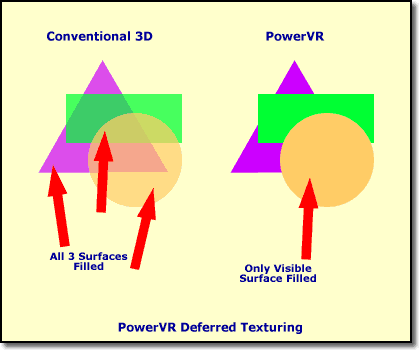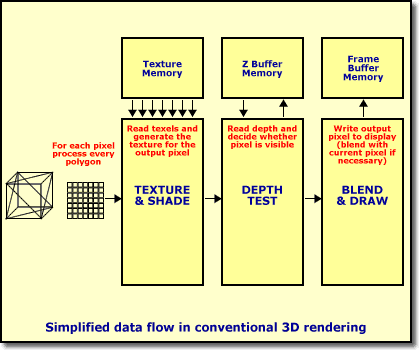A Speedy Tiler: Kyro II on Hercules' 3D Prophet 4500
Details Of Tile Based Rendering (TBR)
Even the most expensive high-end cards have one problem: limited bandwidth. Fans of the classic approach, such as NVIDIA, can only deal with the bandwidth problem by packing on fast memory modules. Video memory with short access times is, however, expensive. ATI is doing its utmost to rein in this problem by using "HyperZ" technology. PowerVR, too, is taking different tack from NVIDIA. Let's take a look at the differences.
Conventional cards first fill all the polygons without considering which ones will be hidden later on. PowerVR's technology, on the other hand, first verifies whether it is even necessary to fill all the polygons present in a 3D scene. Generally, only the objects in the foreground require this process. Classic 3D games need to access memory constantly for the z-buffer and to load textures, thereby eating up valuable memory bandwidth.
This diagram makes the huge tasks that 3dfx, NVIDIA and Matrox cards have to undertake even clearer.
Get Tom's Hardware's best news and in-depth reviews, straight to your inbox.
Current page: Details Of Tile Based Rendering (TBR)
Prev Page Memory Next Page Tile Based Rendering, Continued

